Convention on International Trade in Endangered Species on Wild Fauna & Flora 13/08/2019 – Posted in: Daily News – Tags: endangered species, Indian star tortoise, Small-clawed otter, Smooth-coated otter, Tokay gecko, Wedgefish
CONVENTION ON INTERNATIONAL TRADE IN ENDANGERED SPECIES
For: Preliminary
Topics covered: About the Convention on International trade in endangered species on wild flora and fauna
News Flash
India has submitted proposals regarding changes to the listing of various wildlife species in the Convention on International Trade in Endangered Species (CITES).
The country seeks to boost the protection of all the five animal species as they are facing a high risk of international trade.
- Smooth-coated otter
- Small-clawed otter
- Indian star tortoise
- Tokay gecko
- Wedgefish
For the Indian rosewood, the proposal is to remove the species from CITES Appendix II.
Convention on International Trade in Endangered Species
- Convention on International Trade in Endangered Species on Wild Fauna and Flora is an international treaty to ensure that trade in wild animals and plants do not threaten their survival.
- The species covered by CITES are listed in three appendices on the degree of protection they require.
Proposals
- India is among the parties proposing the re-listing of the star tortoise from CITES Appendix II to Appendix I.
- With regard to the two otter species, India, Nepal and the Philippines have proposed that the listing be moved from CITES Appendix II to Appendix I for the more endangered species. A similar proposal has been made to include the Tokay gecko in Appendix I.
Smooth-coated otter
- The smooth-coated otter is an otter species occurring in most of the Indian subcontinent and Southeast Asia.
- The fur of this species is smoother and shorter than that of other otter species.
- India is home to 3 of the 13 species of otters found worldwide. These are – Eurasian Otter (Lutra lutra); Smooth-coated Otter (Lutra perspicillata) and Small-clawed otter (Aonyx cinereus).
- It occurs in areas where fresh water is plentiful — wetlands and seasonal swamps, rivers, lakes, and rice paddies.
- Major threats to Asian otter population are loss of wetland habitats due to construction of large-scale hydroelectric projects, reclamation of wetlands for settlements and agriculture, reduction in prey biomass, poaching, and contamination of waterways by pesticides.
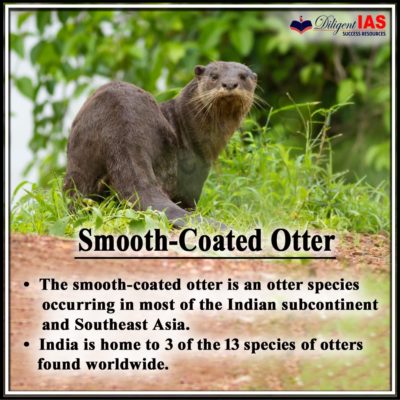
Smooth-coated otter
Asian small-clawed otter
- It is also known as the oriental small-clawed otter or simply small-clawed otter.
- Small-clawed otter is a semiaquatic mammal native to South and Southeast Asia.
- It is is the smallest otter species in the world.
- The Asian small-clawed otter inhabits mangrove swamps and freshwater wetlands in South and Southeast Asia.
- They are seriously threatened by rapid habitat destruction, hunting and pollution. Their population trend is decreasing despite being a protected species.
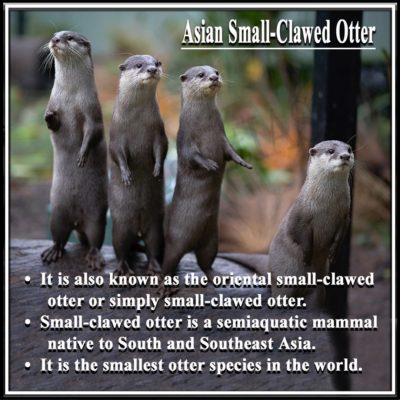
Asian small-clawed otter
Indian star tortoise
- It is a threatened species of tortoise found in dry areas and scrub forest in India, Pakistan and Sri Lanka.
- This species is quite popular in the exotic pet trade, which is the main reason it is endangered.
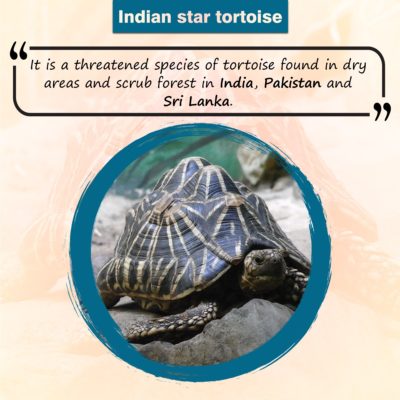
Indian Star Tortoise
Tokay gecko
- It is a nocturnal arboreal gecko in the genus Gekko, the true geckos. It is native to Asia and some Pacific Islands.
- This species occurs in northeast India, Bhutan, Nepal, and Bangladesh, throughout Southeast Asia, including the Philippines and Indonesia, and to western New Guinea in Melanesia.
- Its native habitat is rainforest, where it lives on trees and cliffs, and it also frequently adapts to rural human habitations, roaming walls and ceilings at night in search of insect prey.
- Tokay geckos are culturally significant in many East Asian countries. In Southeast Asia it is a symbol of good luck and fertility. It is believed to be descended from dragons.
- This species is poached for the medicinal trades in parts of Asia.
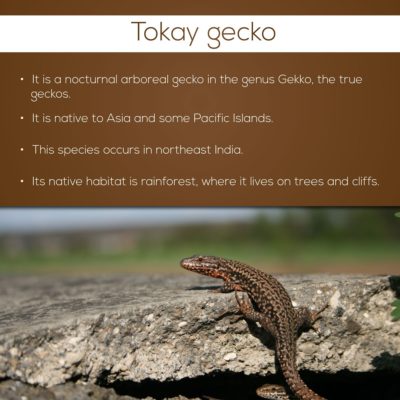
Tokay gecko
Wedge fish
- Wedgefishes are rays of the family Rhinidae, comprising ten species in three genera.
- Classified in the order Rhinopristiformes along with guitarfishes and sawfishes, they have also been known as giant guitarfishes or sharkfin guitarfishes.
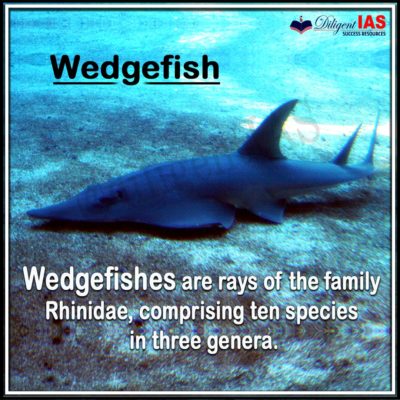
Wedgefish
Indian rosewood
- Indian rosewood may also refer to Dalbergia latifolia.
- Dalbergia sissoo, known commonly as North Indian rosewood, is a fast-growing, hardy deciduous rosewood tree native to the Indian Subcontinent and Southern Iran.
- Sissoo is a large, crooked tree with long, leathery leaves and whitish or pink flowers.
- It is a medium to large deciduous tree.
- Sissoo is native to the foothills of the Himalayas. It is primarily found growing along river banks.
Source: The Hindu
Also, read more daily News
- Pradhan Mantri Kisan Urja Suraksha evam Utthaan Mahabhiyan (PM-Kusum)
- Gogabeel lake is Bihar’s first community reserve
- First global analysis of Nematodes
- Thousands of Tardigrades on the moon
- World Meteorological Organization
- Nehru Trophy Boat Race
You are on the Best Online IAS preparation platform. You are learning under experts.
We are present on Facebook- Diligent IAS, LinkedIn- Diligent IAS, YouTube- Diligent IAS, Instagram- Diligent IAS. Get in touch with us

